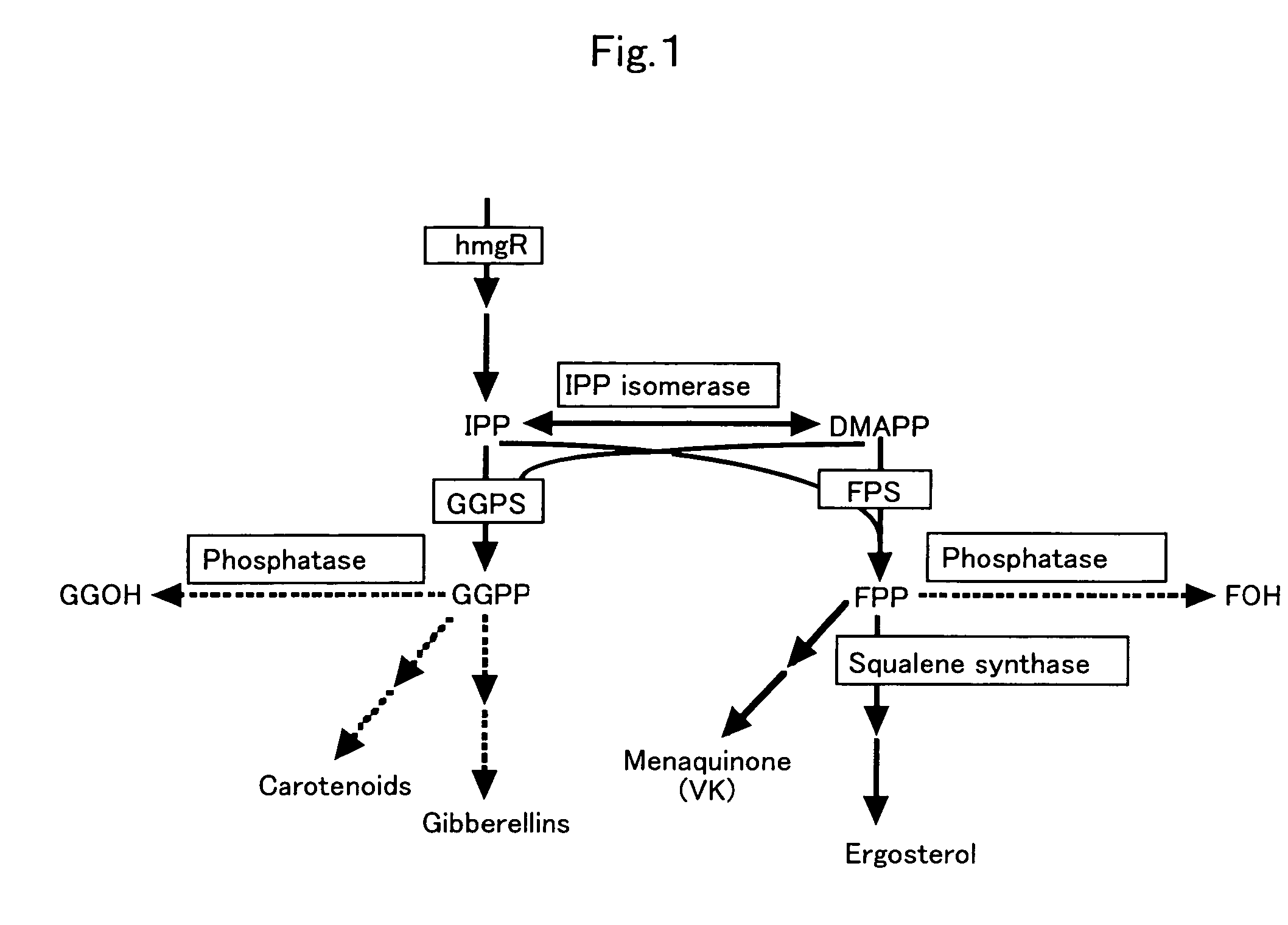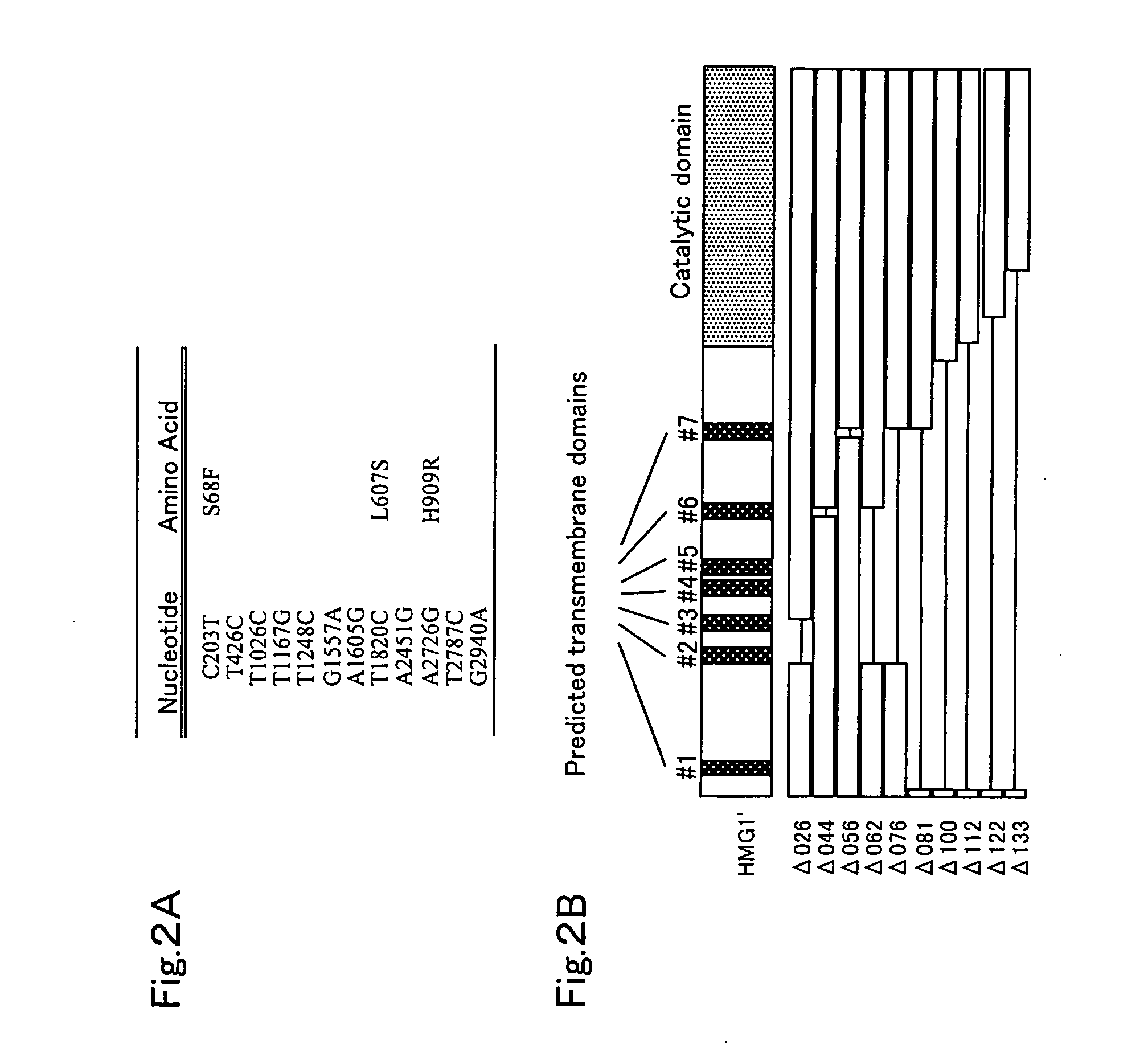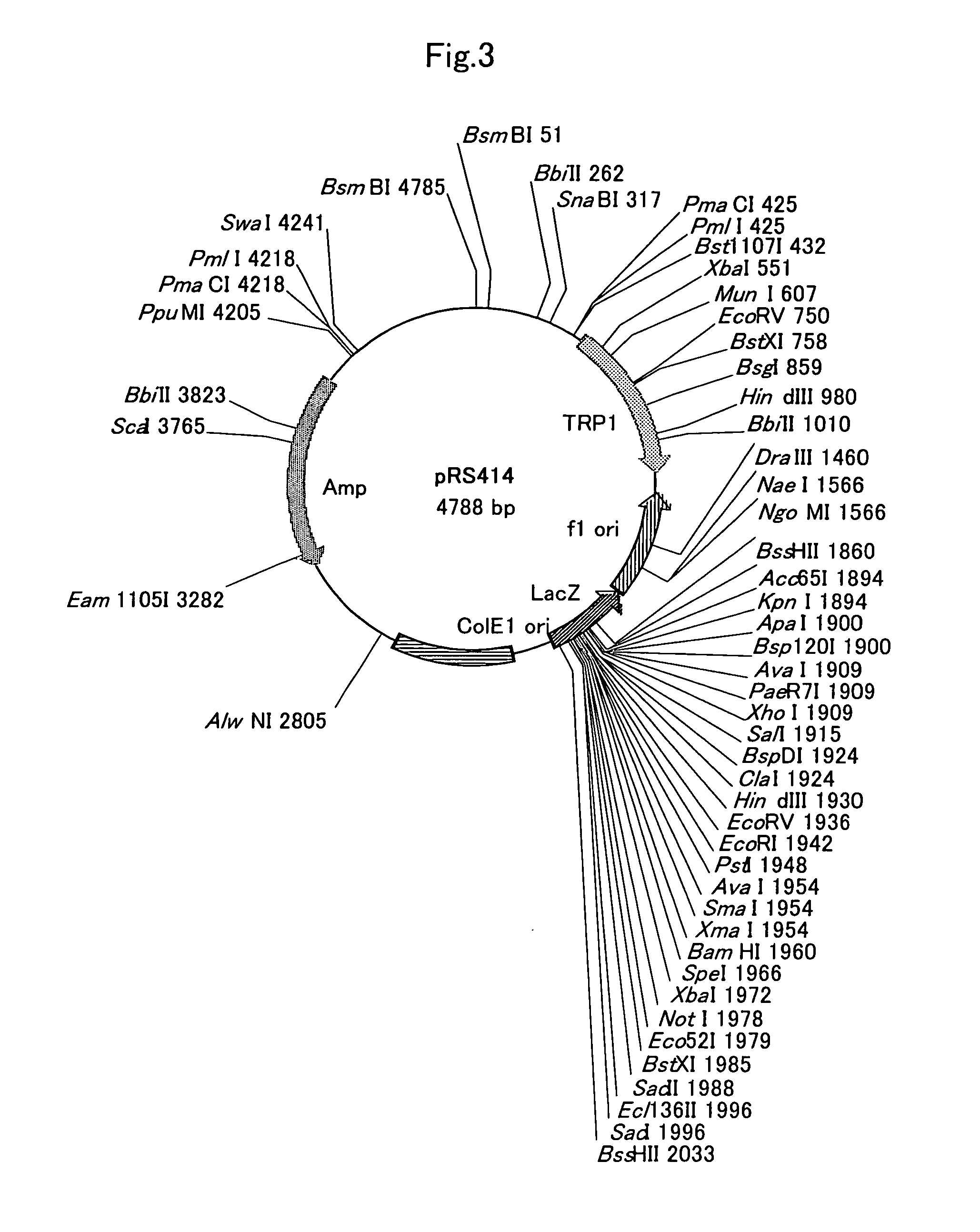Methods of producing prenyl alcohols
a technology of prenyl alcohol and prenyl alcohol, which is applied in the direction of enzymology, peptides, transferases, etc., can solve the problems of difficult to achieve high-precision distillation of ggoh that is a thermally unstable allyl alcohol, and the inability to refining by column chromatography is not suitable for industrial use, etc., to achieve the effect of cultivating recombinan
- Summary
- Abstract
- Description
- Claims
- Application Information
AI Technical Summary
Benefits of technology
Problems solved by technology
Method used
Image
Examples
example 1
Construction of Expression Vectors
(1) E. coli-S. cerevisiae Shuttle Vectors
[0202] Plasmids pRS404, pRS404 and pRS414 (FIG. 3) were purchased from Stratagene. Plasmid pAUR123 was purchased from Takara, and plasmid pYES2 (FIG. 4) was purchased from Invitrogen (Carlsbad, Calif.).
(2) Genomic DNA
[0203]S. cerevisiae genomic DNA was prepared from S. cerevisiae YPH499 using Dr. GenTLE™ (a genomic DNA preparation kit for yeast) purchased from Takara and according to the protocol attached to the kit.
[0204]E. coli genomic DNA was prepared from E. coli JM109 (Takara) by the following procedures. Briefly, JM109 cells were cultured in 1.5 ml of 2× YT medium and harvested by centrifugation. To these cells, 567 μl of TE (pH 8.0), 3 μl of 20 mg / ml proteinase K (Boehringer Mannheim, Mannheim, Germany) and 30 μl of 10% SDS were added. The resultant mixture was kept at 37° C. for 1 hr, and then 100 μl of 5M NaCl was added thereto and mixed. Eighty μl of CTAB / NaCl solution (10% CTAB, 0.7 M NaCl) ...
example 2
Cloning of Mevalonate Pathway-Releted Enzyme Genes
[0219] In the cloning of genes from yeast cDNA, an S. cerevisiae DBY746-derived cDNA library “Quick-Clone cDNA” purchased from Clontech (Palo Alto, Calif.) was used.
(1) Cloning of Farnesyl Diphosphate Synthase Genes
(1-1) Saccharomyces cerevisiae-Derived FPP Synthase Gene ERG20:
[0220] An approximately 0.9 kbp DNA fragment encoding S. cerevisiae FPP synthase gene ERG20 (SEQ ID NO: 1) was amplified by PCR (polymerase chain reaction) using the above cDNA as a template. The PCR primers used are as follows.
Primer 1 (SCFPS1):(SEQ ID NO: 46)5′-ATG GCT TCA GAA AAA GAA AAA GAA ATT AG-3′Primer 2 (SCFPS2):(SEQ ID NO: 47)5′-CTA TTT GCT TCT CTT GTA AAC TT-3′
[0221]
10x ExTaq buffer (Takara)5μl2.5 mM dNTP mix4μl5 U / μl ExTaq (Takara)1μl10 pmol Primer 110 pmol Primer 20.5 ng cDNA50μl in total
[0222] The PCR was carried out in the reaction solution described above for 30 cycles each consisting of 45 sec at 94° C., 1 min at 55° C. and 2 min at 72°...
example 3
(1) Conversion of Escherichia coli FPP Synthase Gene into GGPP Synthase Gene
[0264] (Cloning of Mutants of FPP Synthase Gene)
[0265] The codon encoding the amino acid residue Tyr at position 79 of the polypeptide encoded by E. coli ispA was modified by substitution mutation using pALispA4, pALispA8, pALispA15, pALispA16 and pALispA18 obtained in section (1-2) in Example 2 and according to the protocol described in the “Protocols and Applications Guide, 3rd edition, 1996 Promega, ISBN 1-882274-57-1” published by Promega. The following oligonucleotides for introducing mutations (sometimes referred to as “mutation oligo(s)”) were prepared by chemical synthesis.
ISPA-D:(SEQ ID NO: 74)5′-ATC ATG AAT TAA TGA GTC AGC GTG GAT GCA TTC AACGGC GGC AGC-3′ISPA-E:(SEQ ID NO: 75)5′-ATC ATG AAT TAA TGA TTC AGC GTG GAT GCA TTC AACGGC GGC AGC-3′ISPA-M:(SEQ ID NO: 76)5′-ATC ATG AAT TAA TGA CAT AGC GTG GAT GCA TTC AACGGC GGC AGC-3′
[0266] In the above mutation oligo ISPA-M, nuc...
PUM
| Property | Measurement | Unit |
|---|---|---|
| concentration | aaaaa | aaaaa |
| concentration | aaaaa | aaaaa |
| concentration | aaaaa | aaaaa |
Abstract
Description
Claims
Application Information
 Login to View More
Login to View More - R&D
- Intellectual Property
- Life Sciences
- Materials
- Tech Scout
- Unparalleled Data Quality
- Higher Quality Content
- 60% Fewer Hallucinations
Browse by: Latest US Patents, China's latest patents, Technical Efficacy Thesaurus, Application Domain, Technology Topic, Popular Technical Reports.
© 2025 PatSnap. All rights reserved.Legal|Privacy policy|Modern Slavery Act Transparency Statement|Sitemap|About US| Contact US: help@patsnap.com



